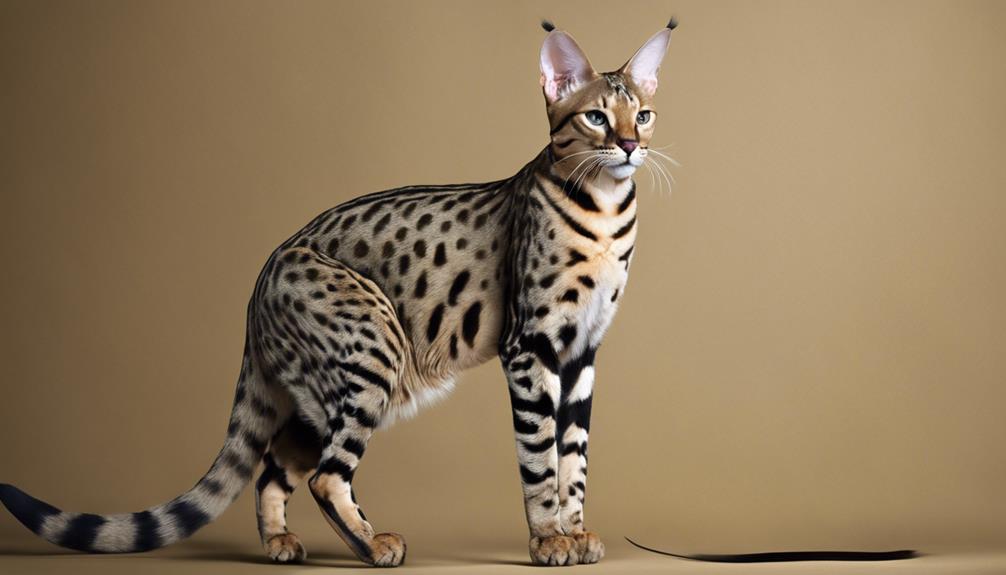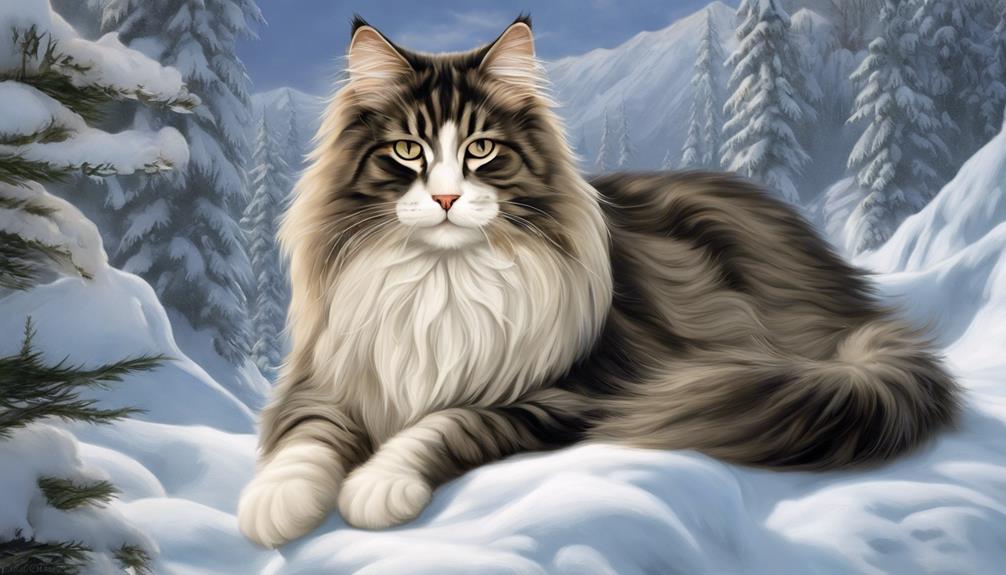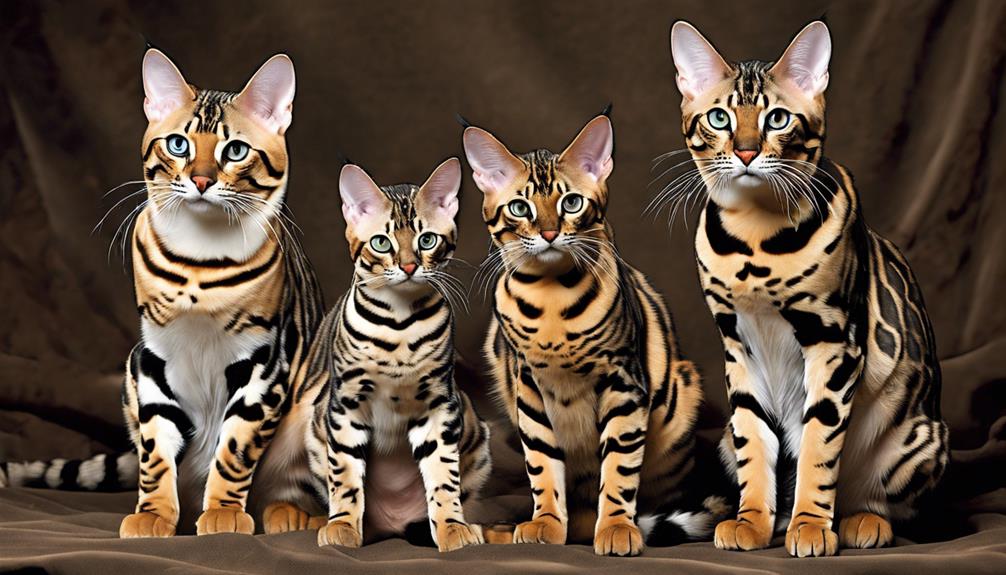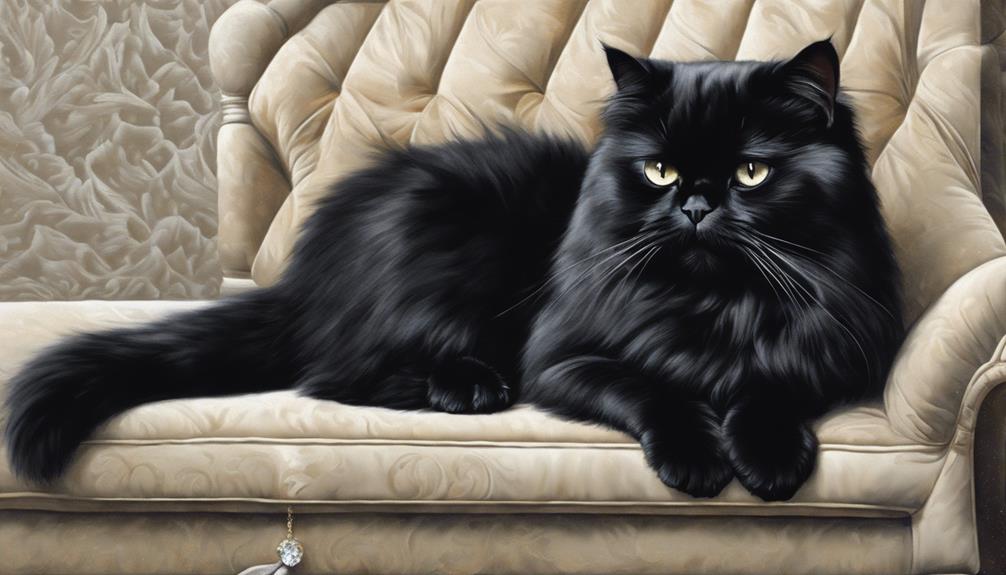When it comes to large exotic cat breeds, the Maine Coon, Savannah, and Norwegian Forest cats are top picks. The Maine Coon stands out for its friendly nature and record-breaking size. Savannah cats look wild thanks to their Serval ancestry. Norwegian Forest cats impress with their muscular builds and distinctive looks. These breeds offer unique traits and sizes that cat enthusiasts find appealing.
Key Takeaways
- Maine Coon: Guinness World Record holder for longest cat, known for striking appearance and unique vocalization.
- Savannah Cat: Resemble wild cats, may exhibit wild behaviors due to Serval ancestry.
- Norwegian Forest Cat: Strong, muscular build, famous for large paws and thick coats, originated from Norwegian legend.
Maine Coon Cat Breed
The Maine Coon cat breed stands out as one of the largest domestic cat breeds, known for its impressive size and friendly demeanor. Weighing up to 20 pounds and measuring up to 40 inches in length, Maine Coons hold the Guinness World Record for the longest cat.
Originally bred as farm cats, they've a striking appearance with their large size and bushy tails. What sets Maine Coons apart is their unique vocalization; rather than meowing, they yowl, giving them a distinct voice.
Despite their size, Maine Coons are prized for their sociable nature and friendly demeanor, making them popular pets in the United States. Their affectionate and outgoing personalities make them great companions for families and individuals alike.
Their striking appearance and gentle temperament have endeared them to cat lovers around the world. Maine Coons truly embody the perfect blend of size, charm, and companionship, making them a top choice for those seeking a lovable feline friend.
Savannah Cat Breed

Known for their unique mix of stripes and spots, Savannah cats resemble a wild cat in appearance. These exotic large cats are bred from the Serval, a wild African cat species, giving them their striking and distinctive look. Due to their hybrid nature, Savannah cats may exhibit behaviors more akin to their wild ancestors, making them illegal in some states.
It's fascinating to note that Savannah cats can grow quite large, with some individuals reaching heights of over 1 foot 5 inches. Despite their wild appearance, these beautiful felines can have a friendly and social demeanor, making them a unique addition to any family. As they're bred with domestic cats over generations, the size of Savannah cats tends to decrease, but their enchanting appearance remains a reflection of their Serval bloodline.
If you're considering a Savannah cat, be sure to check the regulations in your area, as these extraordinary felines mightn't be welcome everywhere due to their hybrid origins.
Norwegian Forest Cat Breed

Stepping away from the Savannah Cat breed, let's now explore the Norwegian Forest Cat, a majestic feline known for its impressive size and unique appearance. The Norwegian Forest Cat can weigh up to 22 pounds, boasting a strong and muscular build that exudes power and grace. Originating from a Norwegian legend, these cats are famous for their large paws and thick coats, which provide them with protection in harsh climates. Their distinct physical features make them truly extraordinary in the world of feline breeds, enchanting the hearts of many cat enthusiasts.
With their large size and striking presence, Norwegian Forest Cats stand out as a breed that commands attention. Their unique heritage adds to their allure, making them a cherished companion for those who appreciate their beauty and strength. Whether it's their thick, luxurious coats or their large, expressive eyes, Norwegian Forest Cats are truly a sight to behold, embodying elegance and charm in every way.
Frequently Asked Questions
What Cat Is Bigger Than a Maine Coon?
We think the Savannah cat is bigger than a Maine Coon. They can reach over 1 foot 5 inches tall and weigh up to 20 pounds. Savannah cats are bred from Servals, a wild African cat species.
What Are the Top 3 Most Popular Cat Breeds?
We thoroughly enjoy exploring popular cat breeds! It's intriguing to discover the different characteristics that make them special. Let's delve into the top 3 most popular cat breeds and investigate their wonderful traits together.
What Is the Most Exotic Cat?
The most exotic cat is the Savannah cat, known for its hybrid origin from the wild Serval. These felines can grow large, reaching heights over 1 foot 5 inches and weighing up to 20 pounds.
What Is the Best Large Cat?
When considering the best large cat, it's important to evaluate traits like size, temperament, and compatibility with your lifestyle. Every cat is unique, so research and personal connection are key for finding the perfect feline companion.
Conclusion
To sum up, selecting a large exotic cat breed like the Maine Coon, Savannah, or Norwegian Forest cat can bring a unique and fascinating experience into your home.
These majestic felines are as stunning as they're loving, offering endless joy and companionship.
They truly are like having a living work of art in your midst, adding a touch of wild beauty to your everyday life.
Consider welcoming one of these incredible breeds into your family today!










